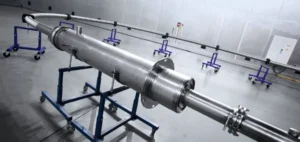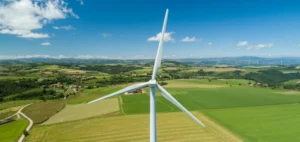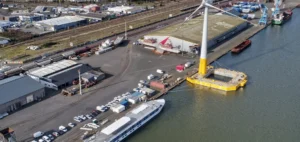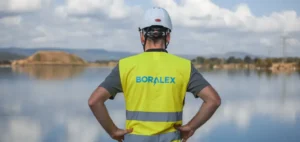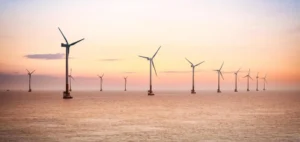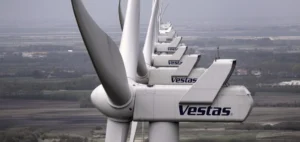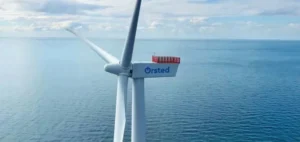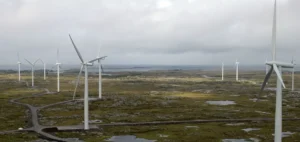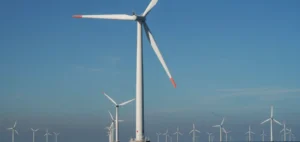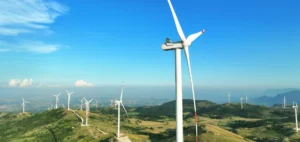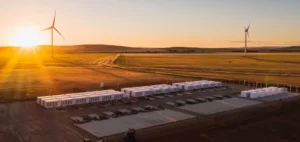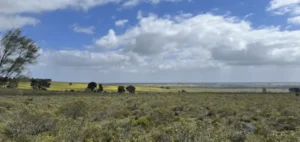Energy companies Equinor and SSE Renewables are currently exploring options for the development of the fourth phase, Dogger Bank D, of the world’s largest offshore wind farm. The two companies each own 50% of the development proposal.
1.32 GW of wind capacity could be added to the 3.6 GW already under construction
Additional Dogger Bank D wind capacity would require a new permit to be implemented and could add 1.32 GW of fixed offshore wind capacity to the 3.6 GW already under construction with phases A, B and C of the project.
The proponents will release an initial scoping report describing the work in progress to explore technical feasibility at the end of March. Two options are being studied for the energy generated by the offshore wind farm: connection to the grid and/or production of green hydrogen.
Option 1: Grid connection The electricity generated by Dogger Bank D could be connected to a grid in Lincolnshire where National Grid is installing new infrastructure to meet the UK government’s ambitions to generate 50 GW of offshore wind power by 2030.
Option 2: Green Hydrogen Production The other option is to use the electricity produced to generate green hydrogen at an electrolysis facility in the Humber area. If developed, this project could become the largest green hydrogen project in the UK and contribute to the government’s green hydrogen ambitions.
Dogger Bank D is part of Equinor’s strategy for offshore wind projects
Halfdan Brustad, vice president of Dogger Bank at Equinor, said the development of Dogger Bank D is part of Equinor’s strategy to further develop offshore wind projects in the North Sea. Paul Cooley, director of offshore wind at SSE Renewables, also expressed his enthusiasm for the project.
Oliver Cass, director of the Dogger Bank Wind Farm project, said:
“We are in the early stages of reviewing the technical feasibility of the grid and also the hydrogen options for a potential fourth phase of the Dogger Bank Wind Farm. We will be working with local, state and regional stakeholders over the next few months as the project progresses.”
“Not only is this project a great opportunity to generate more affordable green energy for UK consumers and increase the resilience of our energy networks, it would also build on the economic and social legacy started by the early phases of the project. Those phases created and supported thousands of jobs in the UK and resulted in over £1 million of investment in coastal communities.”
Phases A, B and C will produce enough energy to power six million homes
The first three phases of the Dogger Bank wind farm, called A, B and C, are located more than 130 km from the Yorkshire coast and will produce enough renewable energy to power six million British homes. A joint venture between SSE Renewables, Equinor and Vårgrønn*, SSE Renewables is leading the construction and delivery of Dogger Bank, while Equinor will operate the wind farm once completed.
Equinor and SSE Thermal accelerate decarbonization of the Humber.
Equinor and SSE Thermal are currently working together to accelerate the decarbonization of the Humber, the UK’s largest and most carbon-intensive industrial region. They are doing so through low-carbon projects such as the Keadby 3 carbon capture plant, the Keadby hydrogen plant, and the Aldbrough hydrogen storage.
As part of the Zero Carbon Humber initiative, of which Equinor and SSE Thermal are members, a hydrogen transportation and storage infrastructure is planned for the Humber. It will be connected to the East Coast Cluster’s CO 2 transport and storage system. The Dogger Bank D green hydrogen option could take advantage of the developing value chain around low-carbon hydrogen. This includes the hydrogen pipeline infrastructure and the growing network of potential customers.




